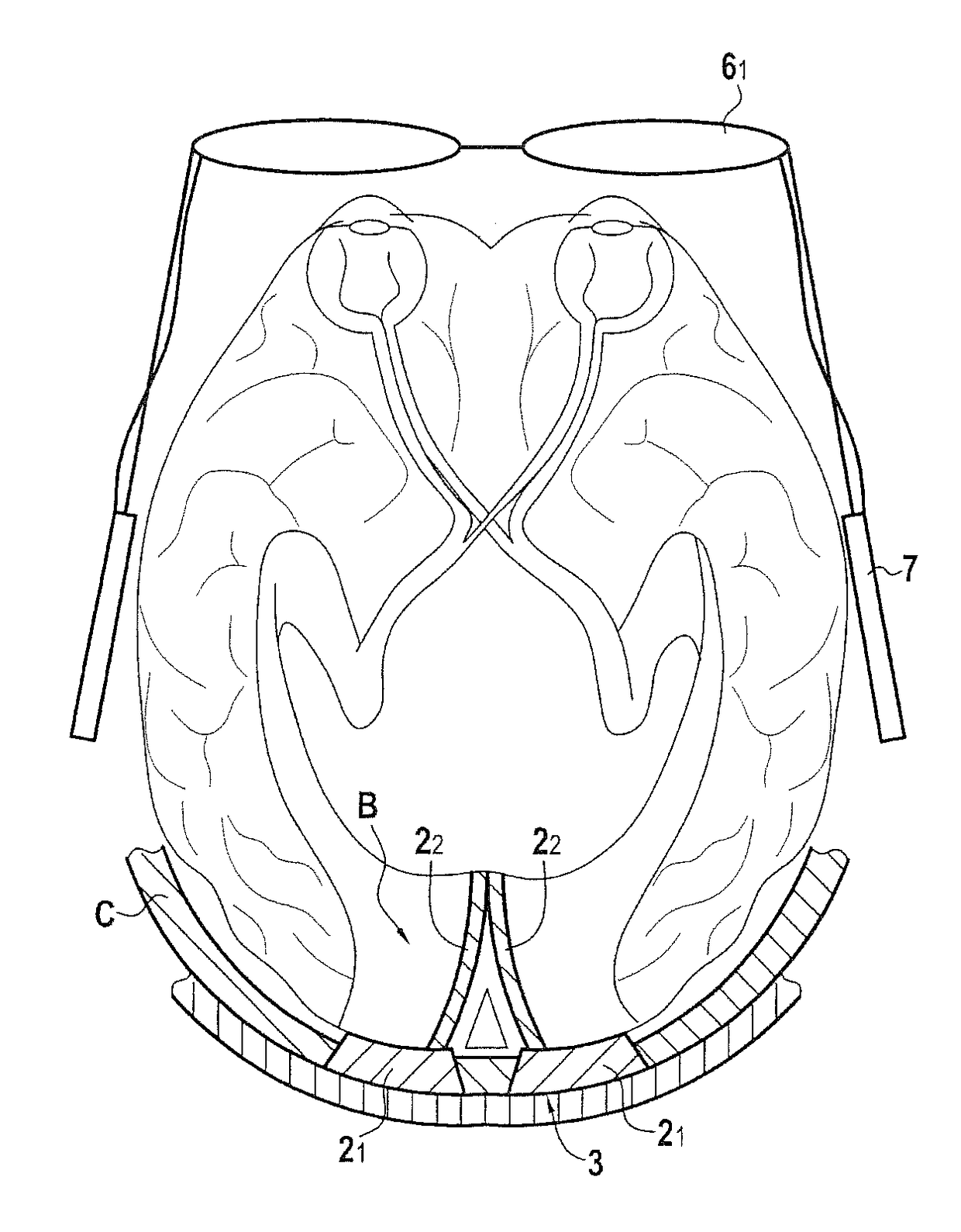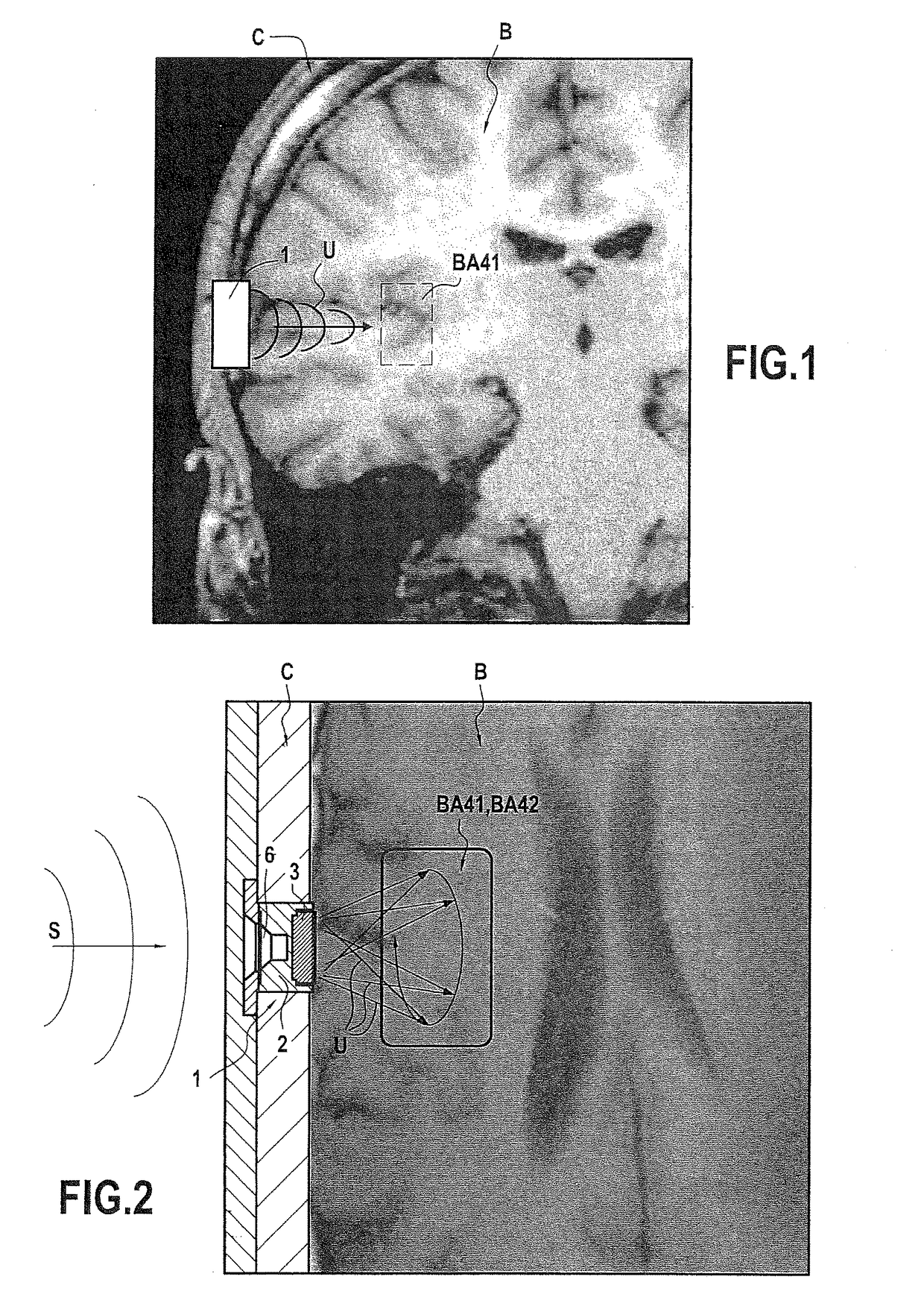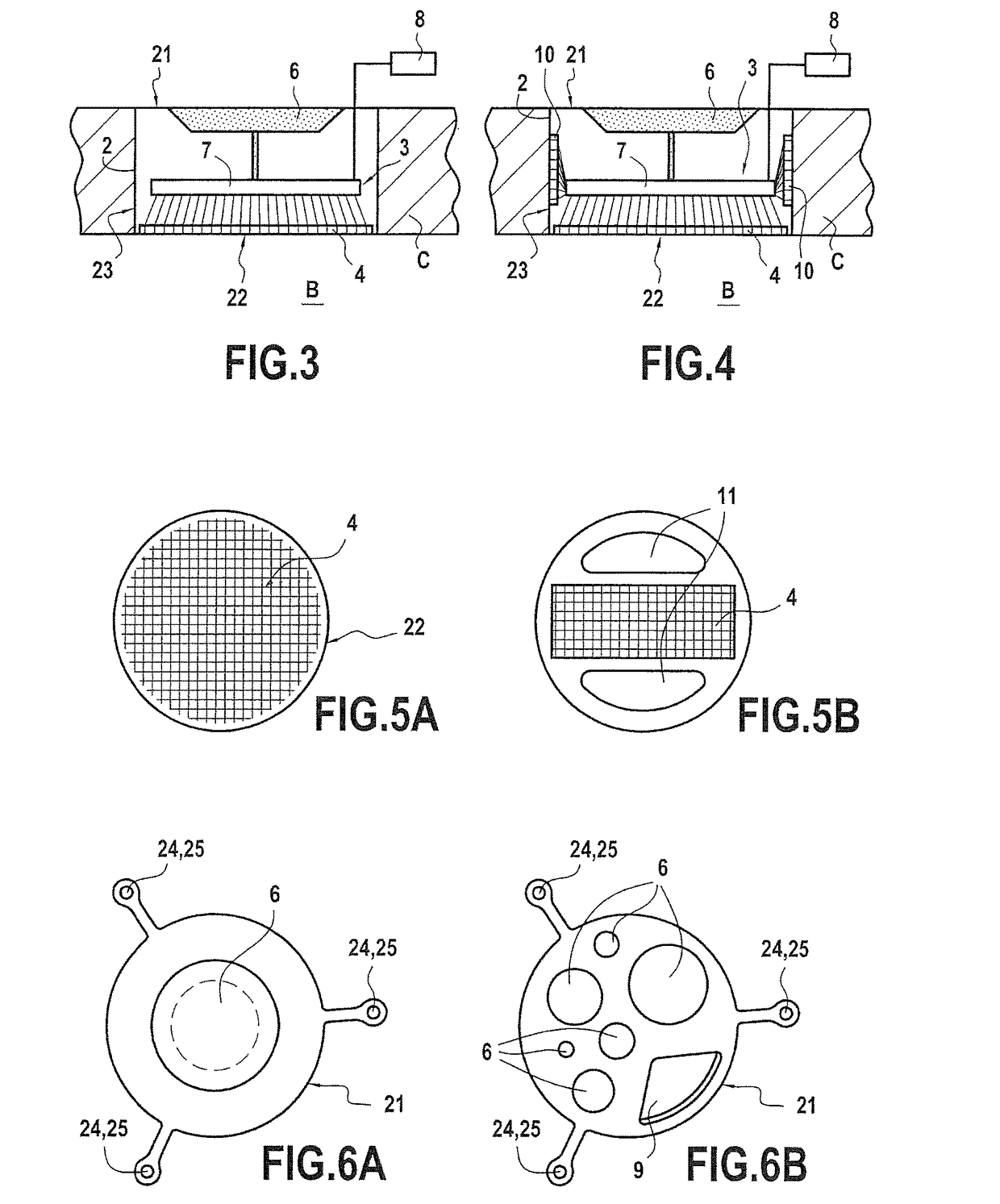Device for treating the sensory capacity of a person and method of treatment with the help of such a device
a technology for treating the sensory capacity and a person, applied in the field of treating the sensory capacity of a person, can solve the problems of difficult to understand the physical and physiological mechanisms of hearing, the inability of cochlear implants and brain-stem implants to restore hearing correctly, and the difficulty of hearing loss and hearing loss, so as to prevent any epileptic event.
- Summary
- Abstract
- Description
- Claims
- Application Information
AI Technical Summary
Benefits of technology
Problems solved by technology
Method used
Image
Examples
Embodiment Construction
[0079]The present invention proposes a novel approach for treating the sensory capacities of patients. FIG. 1 to GB relate to an application of the invention in which the sensory capacity treated is hearing and in particular deafness in patients suffering from sensorineural and / or transmissive deafness. As shown diagrammatically in FIGS. 1 and 2, this new approach consists in ultrasound stimulation of the primary auditory cortex of the brain B of a patient by means of a treatment system 1 that is implantable subcutaneously in the patient's skull C and comprising an ultrasound stimulation device 3 suitable for emitting ultrasound waves U that are focused on the zone of Heschl's gyrus (BA41) and / or of the planum temporale (BA42) that form the primary auditory cortex of the human brain B. The ultrasound waves U that are emitted are pulsed waves, modulated by an electronic converter of the ultrasound stimulation device 3 as a function of a sensory signal, and more precisely of external ...
PUM
 Login to View More
Login to View More Abstract
Description
Claims
Application Information
 Login to View More
Login to View More - R&D
- Intellectual Property
- Life Sciences
- Materials
- Tech Scout
- Unparalleled Data Quality
- Higher Quality Content
- 60% Fewer Hallucinations
Browse by: Latest US Patents, China's latest patents, Technical Efficacy Thesaurus, Application Domain, Technology Topic, Popular Technical Reports.
© 2025 PatSnap. All rights reserved.Legal|Privacy policy|Modern Slavery Act Transparency Statement|Sitemap|About US| Contact US: help@patsnap.com



